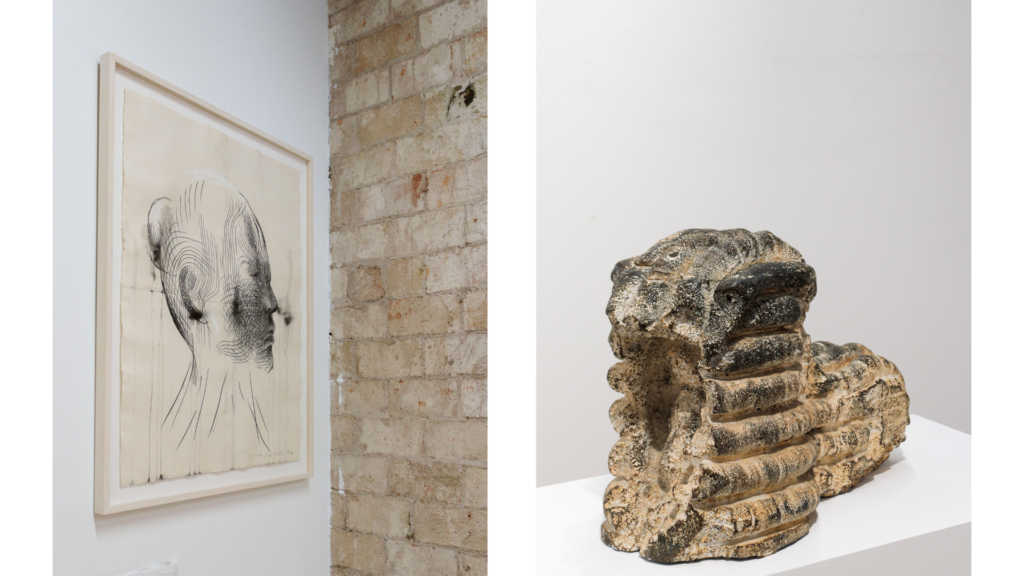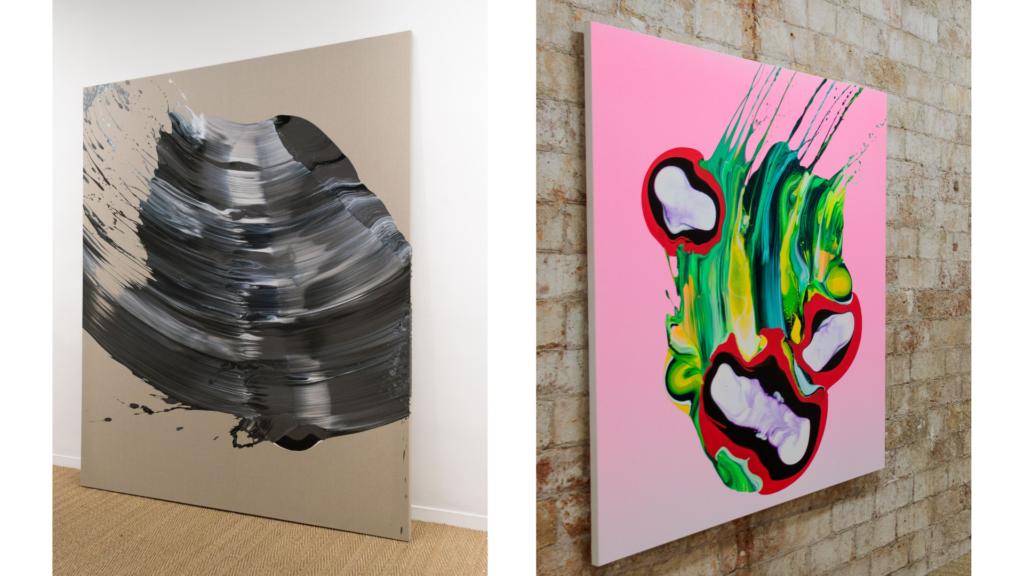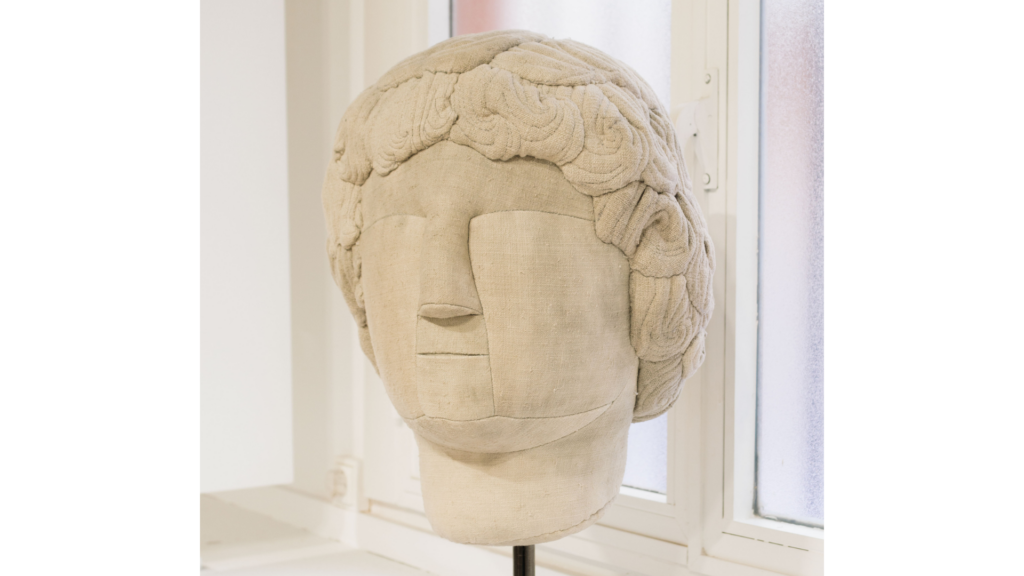- No products in the cart.
Share:
The exhibition “En la Cabeza del Artista” is conceived as a showcase of different approaches to the representation of the head by a selection of artists, including Robert Mapplethorpe, Jaume Plensa, Yago Hortal, Erik Parker, Stephan Balkenhol, Joan Ponç, Gonzalo Guzmán, Jordi Bernadó, Roger Ballen, and Sergio Roger.
Robert Mapplethorpe

In “En la Cabeza del Artista,” we find two works by Robert Mapplethorpe, the celebrated American photographer known for documenting the New York subculture scene in the 60s and 70s. In “Statue Series” (1983), Mapplethorpe captures the essence and form of statues with timeless elegance, while in “Louise Nevelson” (1986), he reflects the strength and distinctive personality of the sculptor.
Jaume Plensa

In this collective exhibition, we find two unusual works by the renowned sculptor Jaume Plensa. On one hand, his graphic work “Étude en Jaune VI” (2020) is a study of the anatomy of the head. On the other hand, “CAP III” (1988) is a sample from the beginning of his career. In the eighties, his sculpture was anthropomorphic, with volumes that transported us to human landscapes with totemic and primitive echoes.
Yago Hortal

Yago Hortal‘s work stems from a strong commitment to painting and the very act of painting. In “SP 119” (2016), the characteristic use of intense colors and dynamic movements by Hortal can be observed. Despite the marked abstraction of the piece, the color stains create a form that resembles a face. In “Z78” (2023), Hortal continues his exploration of abstraction with dynamic and fluid brushstrokes, differing from the painter’s usual vibrant palette.
Erik Parker

Erik Parker is known for his style that fuses influences from Pop Art and the American psychedelic subculture. In “S/T (Split)” (2004), Parker uses mixed media to create a psychedelic composition in which the viewer can intuit the shape of a head.
Stephan Balkenhol

Stephan Balkenhol, a sculptor known for reintroducing figurative sculpture to the contemporary scene, uses carved softwoods to create works with visible textures and stark contrasts. In “Head of a man” (2005), Balkenhol presents a simple but expressive portrait, demonstrating his skill in woodworking. His sculptures evoke medieval techniques and folk art, standing out for their distinctive style and meticulous technique.
Joan Ponç

Joan Ponç, a Barcelona painter influential in the avant-garde art scene of the 40s and 50s, is known for his personal symbolism and his world inhabited by imaginary beings. In “Suite En la Cabeza del Artista” (1958-59), Ponç uses ink on paper to create drawings that explore the magical and mysterious aspects of reality.
Gonzalo Guzmán

Gonzalo Guzmán, a young contemporary sculptor, is known for his stainless steel sculptures that refer to his dream world. “Estela_31” (2024) is another example of Guzmán‘s use of steel to create sculptures that play with form and space, generating a strong visual impression.
Jordi Bernadó

The exhibition includes “Barcelona (BCN 878.1)c2bn” (2023) by Jordi Bernadó, a photographer known for his images that question reality and representation. This photograph captures “Flora,” the large-format sculpture by Jaume Plensa that was installed on Passeig de Gràcia in the summer of 2023 for his exhibition at La Pedrera.
Roger Ballen

Roger Ballen is known for his disturbing psychological studies and social statements. In “Perpetrator” (2003) and “Head Inside Shirt” (2001), Ballen uses black and white to capture unsettling scenes that explore the human subconscious.
Sergio Roger

Sergio Roger draws inspiration from the beauty of ancient civilizations, especially the Greco-Roman era. He reinterprets and subverts iconic elements of classical art using natural textile fibers instead of marble. Each of his works is unique, created with antique fabrics like linen and silk, carefully selected from antique shops. With technical mastery in textile sculptures, Roger explores ancestral techniques with a contemporary vision, questioning our perception of the past and the permanence of traditional art.
























































































